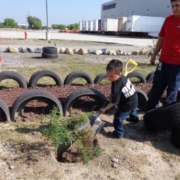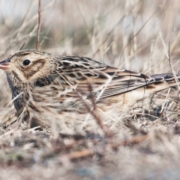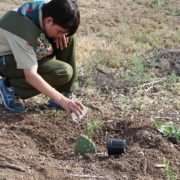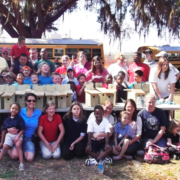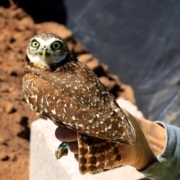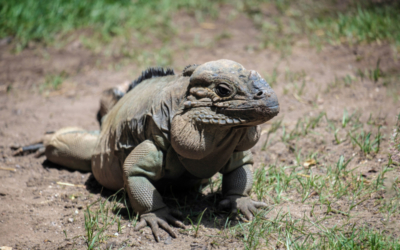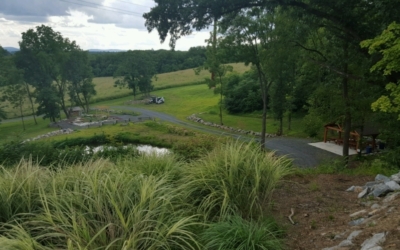Chemours Washington Works | Decades of Conservation, Driven by Partnerships and Ambition
From wavering employee interest to budget constraints, conservation programs can face many challenges as years go by. Forming the right partnerships and continually taking small steps toward big goals are, in these cases, keys to program longevity.
Chemours operates a plant within Washington Works, a large plastics manufacturing facility shared with DuPont and Kuraray located outside Parkersburg, WV. Since 1988, employees and retirees from the three companies (known as the Washington Works Nature’s Environmental Support Team, or WW-NEST), have worked to support wildlife on company grounds through conservation and habitat enhancement projects across the 1,950-acre site. Four years later, the team achieved WHC Conservation Certification® for their efforts, and in the same year began to construct a trail system.
Today, the Washington Works conservation program is Certified Gold and the trails serve as a venue for extensive environmental education and community outreach work that benefits both the company and the wide array of visitors that explore, study and volunteer time on-site. The Washington Works Nature Trails are open to the public and transect the site’s 65 acres of hardwood forest (which feature over 40 native tree species, including oak, maple and ash varieties), 18 acres of meadowland, a pond and a constructed vernal wetland.
Chemours employees make up the largest share of WW-NEST volunteers and a retired technical fellow from Chemours, Dave Johnson, currently oversees the program. Dave began working with WW-NEST about 10 years into the team’s history, when they were focused on habitat conservation and enhancement. He explains that once these natural areas began to thrive, “It was clear that we could do more if we could engage the public in the outdoors. Seeing people walking the trails with their family or dogs in tow, avid birders and photographers at work, and classes on field trips inspires the WW-Nest Team to continue their efforts and to dream big.”
While many community members explore the trails independently, WW-NEST also offers structured programming for local students and youth groups. The first field trip conducted at the site was for a local church’s reading camp. A Chemours employee who volunteered with the camp suggested that the children travel on-site to identify and research wildlife by using reference guides, providing participants with a hands-on, interdisciplinary way to exercise their reading skills. The event was well-received, and the church now returns each summer.
WW-NEST soon expanded their offerings to local schools, who can either partake in docent-led field trips or develop their own lesson plans. Each year* about 180 first graders travel the trails to participate in activities like leaf collection, insect lifecycle lessons, and snake and frog observation; local high school students visit the site to conduct transect monitoring, GIS mapping, tree identification and water testing. Dave cites these field trips as one of WW-NEST’s greatest achievements, explaining that, “Developing partnerships with local teachers and schools has taken quite the effort, but the payback in seeing students’ enjoyment and engagement makes it worth the effort.” He adds that WW-NEST volunteers are typically eager to serve as field trip docents.
While organizing volunteers for habitat construction and maintenance activities has been more challenging, the team has been able to accomplish these tasks through partnerships with local Scout troops. Cub and BSA Scouts regularly contribute to habitat enhancement tasks, including planting American holly trees and constructing bird and bat boxes.
Since 2004, 10 Eagle Scout candidates have also completed their required service projects at Washington Works. Each of these projects, which are selected by individual Scouts after they learn about WW-NEST’s needs, have increased the accessibility of the site — information kiosks, bridges and benches have been added to public areas, and two Scouts reconstructed trails to make them wheelchair accessible through the use of compacted gravel. Dave says that “Getting involved with Scouting, particularly with Eagle Scout projects, has been a win-win for both parties. The Scouts provide planning, manpower and partial funding and WW-NEST collaborates on the planning and provides additional funding to achieve projects that would normally be beyond the scope that a Scout could achieve on his own.”
Dave reflects that each addition to the program is “a step toward fulfilling the WW-NEST’s dreams.” Ultimately, the team would like to construct a classroom building and other educational facilities for school groups to utilize year-round. As a first step they hope to soon construct a shelter area for school groups so that field trips can proceed in inclement weather.
He encourages other teams to likewise set lofty goals. “Don’t limit what you can do to what you think you can do,” he says, “and don’t prejudge what you will be allowed to do before you make the case for doing it.” WW-NEST was able to secure routine corporate funding for their program after demonstrating what they had accomplished using proceeds from site-level contributions. He also reinforces the importance of partnerships, stating that WW-NEST’s “partnerships with Scouting and schools allow achievements greater than what could be achieved through employee volunteer efforts alone.”
Through this combination of ambition, strategy and collaboration, WW-NEST’s efforts have been sustained for over three decades and are primed to keep thriving.
*Community engagement figures derived from 2018 (pre-pandemic) Certification application
Related Content
Blogs:
- Back to School: Partnering with Local Schools to Strengthen Your Certification Program
- Celebrate World Wetlands Day on February 2
- Habitat Design that Invites Exploration
- Hands-On Means Minds-On
- The Importance of Aligning Your Projects with Learning Standards
- Let’s Go Outside! The Benefits of Learning in the Outdoors
- Talking to Yourself: Making Employees Aware of Your Projects
Webinars:
- Best Practices for Education Programming at Corporate Sites
- Getting Buy-In From the Top: How to Gain Approval for Conservation Projects
- How to Select the Best Lessons for Your Education Projects
- Measuring the Success of Your Conservation Education Projects
- Scouting and Your Habitat: Building a Partnership
- STEM Learning in Your Habitat
- The Three “E”s to Success: Employees, Education and Engagement
- Using Trails as Pathways for Conservation Education and Wellness
- Water Conservation and STEM: Turning Students into Water Stewards
- Wetland Habitats: Identification, Monitoring and Use as Outdoor Classrooms
Project Guidances:
White Papers:
Quick Facts
| Category: | Member Spotlight |
|---|---|
| Tags: | avian, Awareness and Community Engagement, formal learning, wetlands |
| Site Location: | Washington, West Virginia |
| Partners: | Boy Scouts, DuPont, Kuraray, Wood County Schools |
| Certification Since: | 1992 |
| Certification Level: | Gold Certified |
| WHC Index Link: | Learn more about this program |


